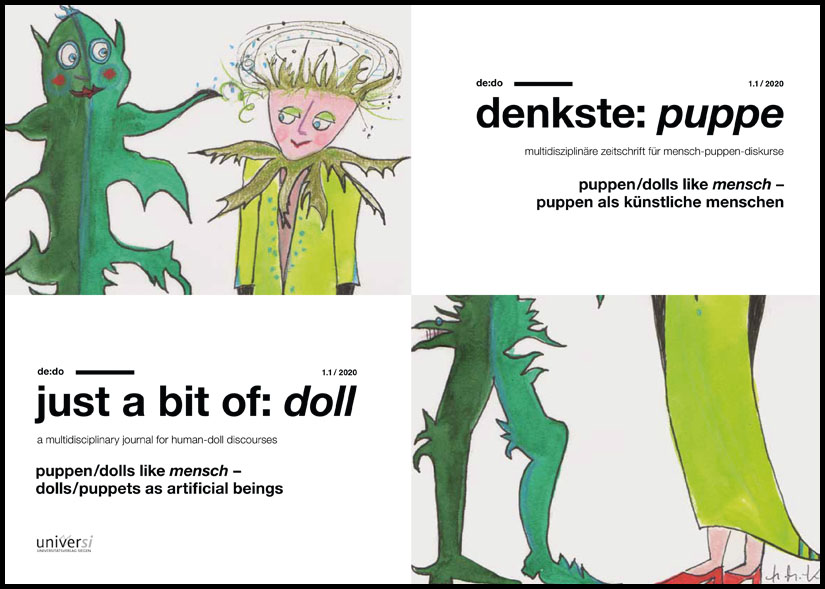Vol. 3 No. 1.1 (2020): dolls/puppets as artificial beings. Part 1.1

The third edition of de:do, a multidisciplinary online journal for human-doll discourses, is a double issue whose shared thematic focus is: puppen/dolls like mensch – dolls/puppets as artificial beings. With this focus, we take up a topic that has concerned mankind since ancient times and has always upset their 'minds' and 'hearts’, their needs and feelings. In mythologies, literary fictions and narratives for adults as well as for children, in works of the visual arts, in film, in mechanical-technical applications and utopias, in the performative arts, in (play-)pedagogy and in the various fields of pop culture, the motif of the doll with its various forms of expression always raises existential questions: Who is man, what is human? The doll as an artificial human being is in a certain way like mensch without being human. As man-made images, as models, imitations and designs of humans, dolls/puppets reflect and confirm existing worlds and at the same time sound out the potentials and abysses of being human between utopia and dystopia, between curiosity and devotion, between horror and bliss, between power and powerlessness. Dolls/puppets like mensch – the double meaning of these words emphasizes the given ambiguity of the dolls/puppets and the intriguing ambivalences inherent in them. In the first part of volume (1.1) the traces and manifestations of the doll motif and of doll(s) – as literary narrative, as artistic motif, as materialized object – will be explored primarily in the context of the fine arts, of literature, photography, theater and android technologies. In the second part of the volume (1.2), on the one hand, children's literature and (play)didactic texts are accentuated; on the other hand, various media and pop-cultural formats from the fields of computer games, comic-film adaptations, films (of different genres) and puppet theater performances are gathered here, as well as issues that link material artifacts and literary narratives. Reviews in the form of essays on literary doll narratives, a photo exhibition and a ballet round off both editions. The time span extends from the Middle Ages to the present and future and shows once again how age-old questions regarding mankind and humanity are integrated into traditional lines and are carried on continuously in fascinating ways.
DOI: doi.org/10.25819/ubsi/5594 (Forwarding to the publication and document server OPUS Siegen)


